5.262. minimum
| DESCRIPTION | LINKS | GRAPH | AUTOMATON |
- Origin
CHIP
- Constraint
- Synonym
.
- Arguments
- Restrictions
- Purpose
is the minimum value of the collection of domain variables .
- Example
-
The first constraint holds since its first argument is set to the minimum value of the collection .
- Typical
- Symmetries
Items of are permutable.
All occurrences of two distinct values of can be swapped.
One and the same constant can be added to as well as to the attribute of all items of .
- Arg. properties
Functional dependency: determined by .
Aggregate: , .
- Usage
In some project scheduling problems one has to introduce dummy activities that correspond for instance to the starting time of a given set of activities. In this context one can use the constraint to get the minimum starting time of a set of tasks.
- Remark
Note that is a constraint and not just a function that computes the minimum value of a collection of variables: potential values of influence the variables of , and reciprocally potential values that can be assigned to variables of influence .
The constraint is called in JaCoP (http://www.jacop.eu/).
- Algorithm
A filtering algorithm for the constraint is described in [Beldiceanu01].
The constraint is entailed if all the following conditions hold:
is fixed.
At least one variable of is assigned value .
All variables of have their minimum value greater than or equal to value .
- Counting
-
Length () 2 3 4 5 6 7 8 Solutions 9 64 625 7776 117649 2097152 43046721 Number of solutions for : domains
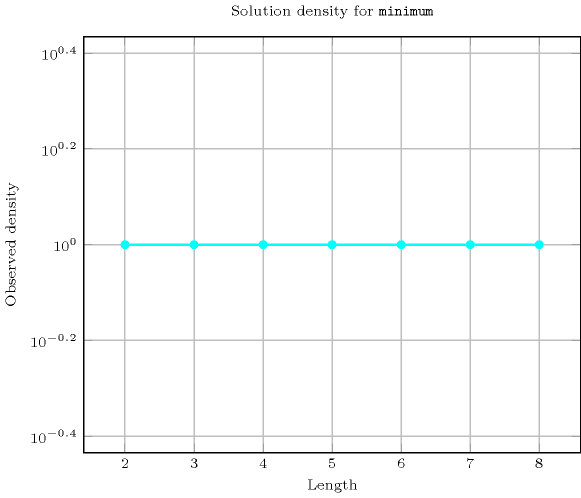
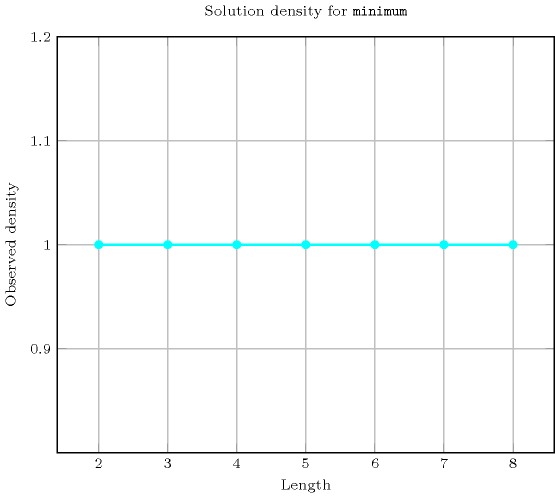
Length () 2 3 4 5 6 7 8 Total 9 64 625 7776 117649 2097152 43046721 Parameter value 0 5 37 369 4651 70993 1273609 26269505 1 3 19 175 2101 31031 543607 11012415 2 1 7 65 781 11529 201811 4085185 3 - 1 15 211 3367 61741 1288991 4 - - 1 31 665 14197 325089 5 - - - 1 63 2059 58975 6 - - - - 1 127 6305 7 - - - - - 1 255 8 - - - - - - 1 Solution count for : domains
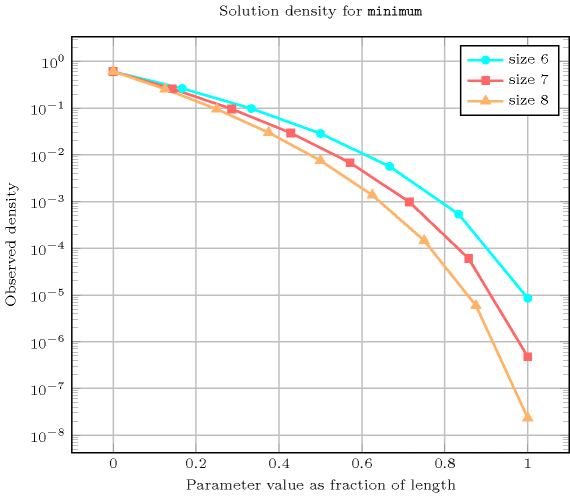
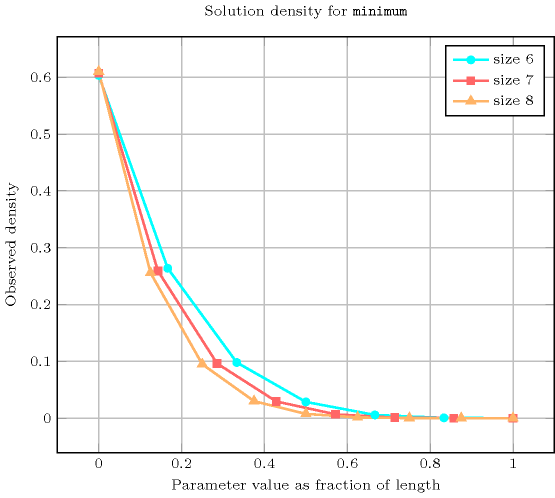
- Systems
min in Choco, min in Gecode, min in JaCoP, minimum in MiniZinc, minimum in SICStus.
- Used in
- See also
common keyword: (order constraint).
generalisation: ( replaced by ).
implies: , .
soft variant: (value 0 is ignored), (open constraint).
specialisation: (minimum or order replaced by absolute minimum).
- Keywords
characteristic of a constraint: minimum, maxint, automaton, automaton without counters, reified automaton constraint.
constraint arguments: reverse of a constraint, pure functional dependency.
constraint network structure: centered cyclic(1) constraint network(1).
constraint type: order constraint.
- Cond. implications
- Arc input(s)
- Arc generator
-
- Arc arity
- Arc constraint(s)
- Graph property(ies)
-
- Graph model
The condition holds if and only if and corresponds to the same vertex. It is used in order to enforce to keep all the vertices of the initial graph. refers to the source vertices of the graph, i.e., those vertices that do not have any predecessor.
Parts (A) and (B) of Figure 5.262.1 respectively show the initial and final graph associated with the first example of the Example slot. Since we use the graph property, the vertices of rank 0 (without considering the loops) of the final graph are outlined with a thick circle.
Figure 5.262.1. Initial and final graph of the constraint
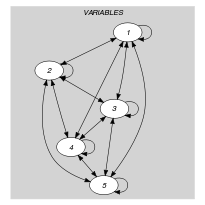
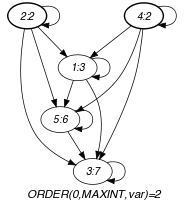
(a) (b)
- Automaton
Figure 5.262.2 depicts a first counter free deterministic automaton associated with the constraint. Let be the variable of the collection. To each pair corresponds a signature variable as well as the following signature constraint: .
Figure 5.262.2. Counter free automaton of the constraint

Figure 5.262.3. Hypergraph of the reformulation corresponding to the automaton of the constraint
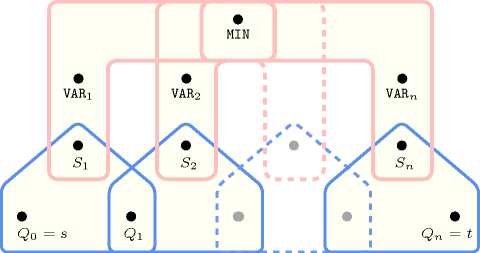
Figure 5.262.3 depicts a second counter free non deterministic automaton associated with the constraint, where the argument is also part of the sequence passed to the automaton.
Figure 5.262.4. Counter free non deterministic automaton of the constraint assuming that the union of the domain of the variables is the set and that the elements of are first passed to the automaton followed by (state means that no value strictly less than value was found and that value was already encountered at least once)
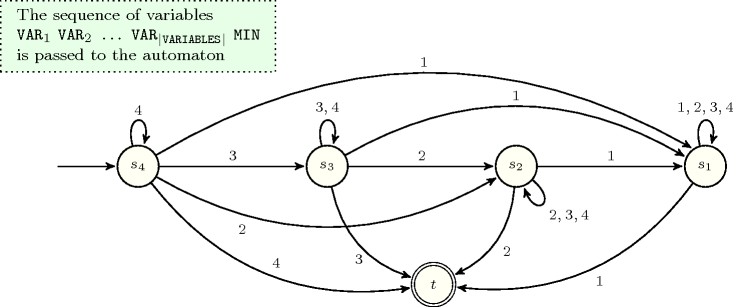
Figure 5.262.5. Hypergraph of the reformulation corresponding to the counter free non deterministic automaton of the constraint

Figure 5.262.6 depicts a third deterministic automaton with one counter associated with the constraint, where the argument is unified to the final value of the counter.
Figure 5.262.6. Automaton (with one counter) of the constraint and its glue matrix

Figure 5.262.7. Hypergraph of the reformulation corresponding to the automaton (with one counter) of the constraint: since all states variables are fixed to the unique state of the automaton, the transitions constraints share only the counter variable and the constraint network is Berge-acyclic
